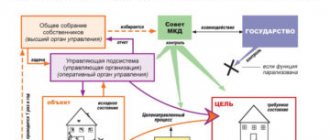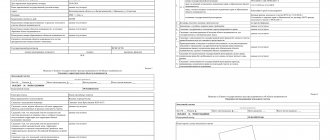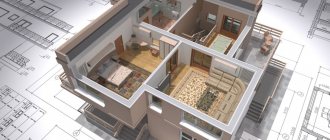The privatization of adjacent land plots is regulated by the Housing Code of the Russian Federation, which came into force on March 1, 2005.
Dear readers! The article talks about typical ways to resolve legal issues, but each case is individual. If you want to find out how to solve your particular problem , contact a consultant:
+7 (499) 938-81-90 (Moscow)
+7 (812) 467-32-77 (Saint Petersburg)
8 (800) 301-79-36 (Regions)
APPLICATIONS AND CALLS ARE ACCEPTED 24/7 and 7 days a week.
It's fast and FREE !
The new law 2021 eliminated the inconsistencies between the Civil and Housing Codes.
In 2021, the procedure for introducing land plots located under a house into civil circulation has been simplified, which has caused increased interest in apartments as investment objects.
Is it possible to privatize the adjacent territory of an apartment building?
In accordance with Art. 36 of the Housing Code of the Russian Federation, residents of a building who own apartments on the basis of ownership rights are automatically co-owners of all non-residential premises and land under the house and around it. Thus, privatization of the site as such is not required at all, it has already been done. However, this point is relevant only for relatively new buildings built after 2005.
But if the house was built earlier, there is a possibility that a cadastral passport was not issued for it, the ownership was not re-registered and the territory still belongs to the municipality. In such a situation, you will have to deal with this issue in order to obtain ownership of the land.
Non-residential premises that are in common shared ownership of all residents do not include those that are intended to serve at least two apartments. Example: elevators, staircases, rooms dedicated to communications, pipes, wiring, electrical substations, and so on.
Size of local area
There is no specific indication of the size of the local area in one case or another. It only says that the area is determined by a cadastral passport or other similar document. The minimum size of the local area is identical to the area occupied by an apartment building.
Example: Let's assume that the house occupies 1500 sq.m. land. This will be the minimum size of the local area. However, it often also includes adjacent children’s playgrounds, the territory occupied by a substation, general parking lots and other similar elements. As a result, the actual local area may be 2 times larger than the area occupied by the house.
In accordance with PP (Government Decree) No. 491, the local area includes:
- The ground under the house.
- Sports areas.
- Playgrounds and children's playgrounds.
- Laundry dryer.
- Green areas.
- General parking for vehicles.
- Substations and so on.
General information
The responsibility for preparing all cadastral documentation for the constructed residential building rests with the developer. Residents can move to new housing as owners immediately after the apartment building is put into operation. In addition to ownership rights to the apartments themselves, they also acquire the right to own the adjacent territory. That is, even at the stage of transfer to residents, the land located under the house and around it is registered as the property of the residents moving in. Accordingly, there is no need for privatization.
If the construction of a multi-storey building was completed a long time ago, namely before 2005, then the owner of the territory around the building is the administration. In this case, residents can organize the privatization process, but only part of the land belongs to privatization.
The following are not subject to privatization:
- driveways;
- cable networks;
- communications;
- squares, parks.
The municipality will retain its ownership of all places that qualify as common use, even if they are located on the territory of an apartment building.
Advantages and disadvantages
As already mentioned, in new buildings, apartment owners are already automatically the owners of the local area. However, the costs of its maintenance are not so high due to the fact that the houses are relatively new.
It’s another matter when the building was erected during the formation of the USSR and, as often happens, has never been repaired since then. In the latter case, registering ownership of the local area may not be the best solution due to the fact that you will have to pay significantly more, and there will be little real benefit from the site. Let's consider the basic advantages and disadvantages of using such land:
| Pros of privatization | Disadvantages of privatization |
| It will be possible to dispose of common areas only with the consent of the residents. | You have to pay taxes for the land. They are divided in equal amounts among all residents. |
| If the municipality needs some plots located in the local area, it will be obliged to compensate their cost to residents. | Any improvement or maintenance of the local area will be carried out at the expense of the residents. Even garbage removal. |
| Residents of the house at a general meeting can independently decide whether to rent out certain plots or not. | |
| In buildings in which residents are the owners of the local area, the price of apartments increases slightly, but increases. As a result, they can be sold more profitably. | Not all areas of the local area can be used as desired. In fact, most often, almost all the land is already used for its intended purpose and nothing more can be done with it. |
| If desired, residents of an apartment building can independently pay for any work on arrangement of the local area. In most cases, this can significantly improve the condition around the house. |
Example : On the first floors of many apartment buildings, non-residential premises are specially left for the arrangement of shops or other similar points. Most often, these sites are sold by the owner of the house and there are no vacancies at the construction stage, however, in old buildings, a situation is quite possible in which the store pays a small amount for renting the space to the municipality. After privatization, he will pay the residents. The same can be said about retail outlets located in the local area.
House area size
The boundaries of the site for which proprietary rights can be registered are determined based on the following indicators:
- Development intensity (how close other buildings are).
- Number of floors of the apartment building and the number of people living.
- Proximity to roads and public places.
The area of the adjacent part can be equal to the area of the apartment building itself. This procedure is general, however, if there are many other structures nearby or a public place is located nearby, then the area may be reduced.
Options for using land area
If the local area is at least partially empty, it can be used in a strictly defined way:
- Installation of advertising (billboards, posters, banners, etc.). You can take money for this, but it must be distributed evenly among all residents.
Example: For installing a huge banner the size of half a house, residents received 1 million rubles. The building has 100 apartments. Of these, 10 are 50 sq.m. in area, and the rest are 30 sq.m. each. In such a situation, the owners of 10 large apartments will receive large shares, and everyone else will receive smaller shares.
- Creation of additional or new parking for vehicles. This is very relevant right now, when a significant part of the territory around any houses is in one way or another occupied by the cars of their residents.
- Formation of a separate green zone . These can be small gardens, squares, parks, or just small areas with planted flowers.
- Construction of garages for certain categories of residents . This opportunity is available only to large families, disabled people, veterans and pensioners.
- Creation of new or additional sports/children's playgrounds . In this case, the costs will be not only for the preparation of the territory, but also for the purchase/installation of sports equipment, children's slides and other similar objects.
- Construction of roads and sidewalks . Such areas of the local area are classified as public places, but the costs of their maintenance, repair or creation of new ones still fall on the residents. Even if they never actually walk on them.
- Rental . At a general meeting of residents, a decision can be made to rent out a certain area (provided that it is not used in any way) to third parties. For example, for the construction of a store, cafe, garage cooperative, and so on. This may be a good way out of the situation, since the income from such a rental can cover all potential costs of maintaining the territory.
Restriction of the rights of residents of this house and neighboring ones is not allowed. It is impossible, for example, to close the yard with a solid fence and give the keys to the gate/gate only to the residents of this house. This is especially true if the house does not stand alone, but is part of a certain microdistrict, the residents of which constantly need to pass through courtyards in order, say, to get to a store or bus stop. The only exception can be a house located separately from others, but such buildings are rare.
Consequences
- The use of the privatized local area is not free; the owners can dispose of the land, but they will have to pay a tax.
- In addition, the owners bear the cost of maintaining the site.
Do I have to pay tax?
Taxation of the local area is regulated by Art. 388 Tax Code of the Russian Federation. When determining the base on which the tax will be calculated, the cadastral value of the site is taken into account in accordance with market data. This is stated in Art. 360 Tax Code of the Russian Federation.
What grounds are needed for forced privatization of an apartment? Who has the right to re-participate in privatization? Find out here.
Is it possible to cancel the privatization of an apartment if it is already owned? Read on.
The tax amount is calculated by multiplying the cadastral price by the land tax rate and a special coefficient, which is established by the local government.
The Tax Code of the Russian Federation provides for a reduction in cadastral value by 10 thousand rubles for certain categories of citizens.
Features of privatization
In some cases, privatization of the local area may have its own characteristics:
| House type | Peculiarities |
| Multi-storey building | Privatization is possible only by decision of the general meeting of residents. This is difficult to implement, since not everyone takes such meetings seriously. In addition, to simplify the procedure as much as possible, you need to choose a representative who will deal with this issue, and many residents may have their own opinion on this matter. |
| Low-rise house | Privatization of the local area of low-rise buildings is carried out according to the same scheme as for high-rise buildings, but usually the residents know each other and there are much fewer of them. As a result, organizing a meeting and choosing a representative can be much easier. |
| A private house | Privatization of land under a private house can be carried out by decision of its owner or owners. In this case, completely different rules apply. |
| New building | In the vast majority of cases, there is no need to privatize the local area in a new building. It is already owned by the residents. |
Law
Along with the Housing Code of the Russian Federation, which is the main law regulating housing legal relations, important provisions on the privatization of adjacent areas of apartment buildings are established by the Land Code of the Russian Federation, which entered into force in 2001. In our question, both vaults are equally important, since courtyards can be attributed simultaneously to both the residential and land funds. In addition, the main provisions on the free privatization of municipal property are contained in Federal Law No. 1541-1 dated July 4, 1991 (current edition dated December 20, 2017).
How to privatize the local area of an apartment building
The entire procedure for privatization of the local area under an apartment building can be divided into three main stages: a meeting of residents, an application to the municipality and registration of ownership in Rosreestr.
Who can initiate
The first step is to determine the initiator. In different cases, this can be different groups of people or even legal entities:
- Developer.
- Private entrepreneurs and companies.
- Management companies.
- Residents.
Order
In order for the privatization of the local area to be successful, you need to follow a certain procedure. It differs significantly from the same privatization of an apartment, so you need to be very careful:
- Residents' meeting.
- Decision-making.
- Selecting a responsible person - a representative.
- Preparation of documentation.
- Contact the administration.
- Signing of the privatization agreement.
- Registration of property rights.
Procedure
The most difficult thing in all this is to gather all the residents. If only simply because most of them do not care at all who owns the adjacent territory there (at least until the new tenants build another nightclub under their windows).
A month before this event, you need to notify all interested parties in every possible way (even if they don’t actually need it). The easiest way to do this is by visiting all apartments, sending notifications to mailboxes and posting announcements on the entrance door (or notice board, if there is one).
Any issues can be discussed directly at the meeting, but the main one should be the problem of privatization of the local area. It is important to take minutes of the meeting and record all important elements. To obtain consent, it is enough if the majority of residents agree, to receive a unanimous “FOR!” no need.
When consent in principle has been obtained, it is necessary to determine the person who will deal with the entire procedure. Sometimes it is enough for someone to express a desire, but in some cases different groups of residents may have their own preferences and in such a situation this stage instantly turns into some simplified semblance of elections.
Regardless of the outcome, it is important that such a representative appears in principle. And it doesn’t matter which “party” of residents he represents; anyway, the privatization of the local area is common to everyone and applies to everything. Even if some residents don’t need it.
When this is done, you need to prepare documents. Often, if a territory has not yet been privatized, then in fact there are no documents for it. As a result, you first need to survey the land and obtain a cadastral passport for the territory. In addition to this, you will also need the minutes of the residents’ meeting, the representative’s passport and a power of attorney for him. The last document is paid and is drawn up by a notary.
You must contact the administration with the prepared documents. An application is also drawn up there (see sample below). It can be prepared in advance or written on the spot, especially since there is nothing complicated in it. After submitting the application and documents, the administration has up to six months to make a decision.
Given the legal requirements, there are almost no refusals. Moreover, this is beneficial to the municipality (it relieves it of the need to spend money on maintaining the territory, because now the residents themselves will do this). So consent is almost always given.
After receiving consent, the administration draws up a privatization agreement, which is signed by a representative of the residents. You can apply this document to Rosreestr or, as when privatizing an apartment, to the MFC to register ownership. After receiving this paper, you can do whatever you want with the local area, within the framework of current legislation.
Sample application
Documentation
When completing privatization and registering property rights, the following documents will be required:
- Application according to the sample presented above.
- Power of attorney for a representative certified by a notary.
Without notarization, the power of attorney will not be considered valid. As a result, any actions, even if for some reason they are performed on the basis of this document, will be declared invalid.
- Minutes of the residents' meeting.
- The decision on privatization.
- Documents confirming payment of state duty (at the stage of registration of ownership).
- Data about residents based on an extract from the Unified State Register (USRN) (you can obtain it through the MFC or Rosreestr).
- Extract from the Unified State Register of Real Estate to your home.
In some cases, additional documents may be required. It is recommended to clarify this point directly when submitting an application for privatization and when registering ownership rights.
Deadlines
The timing of privatization of the local area can be seriously extended:
| Actions | Term |
| Residents' meeting | 1 month |
| Obtaining consent for privatization | Up to 6 months. More often - up to 2 |
| Registration of ownership | Up to 1 month |
On average, the entire procedure takes up to six months and only in rare cases more. As already mentioned, the administration is interested in transferring the adjacent territory to the residents, so they try not to delay the consideration of the application.
Expenses
During privatization, despite the fact that the land is actually transferred free of charge, you will have to incur certain costs:
- 2000 rubles state duty for each tenant .
- Notary services for certification of a power of attorney – up to 3,000 rubles.
Example : If there are 300 residents living in a house or apartment 100, then each of them is required to pay 2,000 rubles in state fees.
Taxes
The amount of tax is determined on the basis of Chapter 31 of the Tax Code of the Russian Federation. Based on it, the cadastral value of the site is taken as the tax base. The tax is 0.3% of this amount. It must be paid annually. In the case of a local area, all residents must bear such expenses in accordance with the share of land they receive (Article 392 of the Tax Code of the Russian Federation).
Example: Based on the cadastral passport, the adjacent territory costs 3 million rubles. 0.3% of this amount is 9,000 rubles. Let's assume that one owner of a 3-room apartment received 5% of the territory (and must pay 5%) of the tax, and the other, the owner of a 2-room apartment, received 3%. The first pays 450 rubles per year, the second 270 rubles per year.
Who has the right to privatize
The following may require registration of rights to the entire land plot adjacent to an already occupied house:
- owners of MKD premises - apartments, rooms, non-commercial premises;
- an initiative group of owners that has secured the position of the general meeting;
- one representative of the house (for example, the Chairman of the Council), elected by the owners;
- UK, HOA.
If the house is just being built, the developer has the right to begin privatization. The main condition is that the title owner of the house (a meeting of residents or the developer) express a desire for privatization.
Attention! Individual owners have the opportunity to privatize only part of the adjacent territory in proportion to the share in the right to the property of an apartment building. You need to understand that the actual size of such a plot will be very small. The privatization procedure in this case will be unprofitable.
Rights and responsibilities of residents after privatization
After registration of ownership, residents have certain rights and responsibilities:
- It is necessary to conclude an agreement and promptly pay for services for clearing snow, removing debris and leaves. Formally, this can be done independently, through the common efforts of residents, but as a rule, no one wants to do such work.
- Erect and demolish objects on the territory (except for those needed to maintain the house).
Example : You can demolish a kiosk that sells vegetables and build a full-fledged store in its place, but you cannot touch the electrical substation building.
- Improve and landscape the area at your own discretion.
- Fence certain areas, but without violating people's rights.
- Create parking spaces.
Possible problems
Despite the simplicity of registering a local area, some problems may arise during the procedure, for example, due to incorrectly defined boundaries of the site or its deliberate increase/decrease.
Example. After the residents discussed all current issues at the general meeting and decided to privatize the yard, the appointed initiative group began re-registration. Appraisers determined the cadastral value, land surveying was ordered and successfully carried out in Rosreestr, and property rights were registered. After some time, it turned out that part of the fenced local area interfered with the free movement of random passers-by. The authorities immediately responded to the violation and went to court. After considering all the circumstances of the case, the judge issued a ruling to dismantle the interfering structure, at the expense of the land owners, that is, the residents of the apartment building.
And if at the initial stages, during cadastral work, all urban planning and land management standards had been taken into account, such a problem would not have arisen. Therefore, each step of privatization should be approached as responsibly and carefully as possible. It is important not only to collect the entire package of documents and submit it for review. And make sure that the information contained in them does not violate the rights and interests of other people.
Frequent reasons for failures
As already mentioned, privatization is refused quite rarely. However, sometimes this still happens. The reason may be:
- Lack of any necessary documents . This is especially true regarding the minutes and decisions of the residents’ meeting.
- Desire to privatize public spaces . Such territories belong to everyone. It is impossible to privatize, for example, a road or a coastal area, allowing its use exclusively for the residents of a given house.
- Discrepancy between the real picture and what is indicated in the documents . Simply put - illegal redevelopment. If there is no building on the cadastral plan, then it should not actually exist.
- Errors in documents . Especially in the cadastral passport and application.
Privatization of the local area is a rather complex task due to the need to collect all the residents, as well as prepare a relatively large package of documents. At a free consultation, our specialists will help you understand the most popular questions related to this procedure. They are ready to act as representatives, which will allow the privatization to be completed much faster and make it easier for the residents of the house.
FREE CONSULTATIONS are available for you! If you want to solve exactly your problem, then
:
- describe your situation to a lawyer in an online chat;
- write a question in the form below;
- call Moscow and Moscow region
- call St. Petersburg and region
Save or share the link on social networks
Author of the article
Natalya Fomicheva
Website expert lawyer. 10 years of experience. Inheritance matters. Family disputes. Housing and land law.
Ask a question Author's rating
Articles written
513
- FREE for a lawyer!
Write your question, our lawyer will prepare an answer for FREE and call you back in 5 minutes.
By submitting data you agree to the Consent to PD processing, PD Processing Policy and User Agreement
Useful information on the topic
1
What does a document on privatization of an apartment look like?
As of [current_date format='Y'], as the main document...
1
How to evict your ex-wife from an apartment
Not all families live happily ever after; many get divorced. Behind…
2
How to evict your roommate from your apartment
Neither legal nor civil marriages provide guarantees of long and...
Privatization of an apartment through the MFC
Privatization of an apartment is a complex and lengthy process, but for many...
4
How much does it cost to privatize an apartment?
Privatization of an apartment is a free procedure, but only within the cost...
2
Certificate of non-participation in privatization
The certificate of non-participation in privatization has now been replaced by an extract...
Who can initiate privatization
Regarding land plots under multi-apartment buildings that were formed before the spring of 2005, or those that are already registered in Rosreestr, they belong to the apartment owners. The owners act as co-owners of the land on which such a house and buildings next to it are erected.
The formation of a land plot under an apartment building, if it is not included in the Rosreestr of Real Estate, requires active action on the part of apartment owners. Any owner of the premises can take the initiative.
As for new buildings, registration of a cadastral passport and entry into the Register of land and houses occurs at the stage of allotment of the plot for construction. Therefore, today, when buying an apartment in a new building, you can be sure that the adjacent area has already been privatized.
The following groups of persons who are given the right to put forward a privatization initiative can be distinguished:
- developer;
- meeting of residential premises owners;
- a person or company authorized by residents to represent their interests and organize activities on the site;
- sole owner or group of apartment owners.
The initiator of privatization can be any person who owns real estate in an apartment building. Today, new buildings are registered by the developer himself.
Timing and cost
When privatizing the local area of an apartment building, the following expenses may arise:
- drawing up a boundary plan - from 7,000 rubles;
- obtaining extracts for house and land - from 300 rubles per document;
- expenses for holding a general meeting (printing, posting notices, sending letters) – several thousand rubles;
- state duty for consideration of an application for privatization is free;
- The state duty for registration in Rosreestr is 200 rubles from each owner (clause 23, clause 1, article 333.33 of the Tax Code of the Russian Federation).
If citizens decide to seek legal assistance, they will additionally have to pay for the services of a specialist - from 10,000 rubles. We remind you that preliminary consultation with our duty lawyer on the issue of privatization of the territory of an apartment building is free of charge.
The timing of privatization depends on the efficiency of citizens:
- holding a general meeting – up to 1 month;
- production of a boundary plan – up to 14 days;
- consideration of the application by the administration - up to 30 days;
- registration with Rosreestr – up to 14 days.
In total, it will take approximately 3 months to privatize the territory of an apartment building.
Owner Responsibilities
Residents, having carried out the privatization procedure, must understand all the responsibility for the maintenance of the site.
It is not enough to simply build a playground or parking lot. Their responsibilities primarily include cleaning the territory and other actions to improve it.
That is, everything that the municipality previously did now falls entirely on the shoulders of the owners.
Therefore they must:
- plant plants, care for them, form flower beds, etc.;
- clean up leaves, snow and other debris;
- repair constructed facilities;
- if necessary, install benches, various fences and gazebos.
To carry out such work, the owners of the local area can hire appropriate people or enter into contracts with companies specializing in cleaning.
The conditions for the privatization of residential premises are regulated by current legislation. Where to start privatizing a house? Information here.
What is the procedure for privatizing land? Details in this article.









